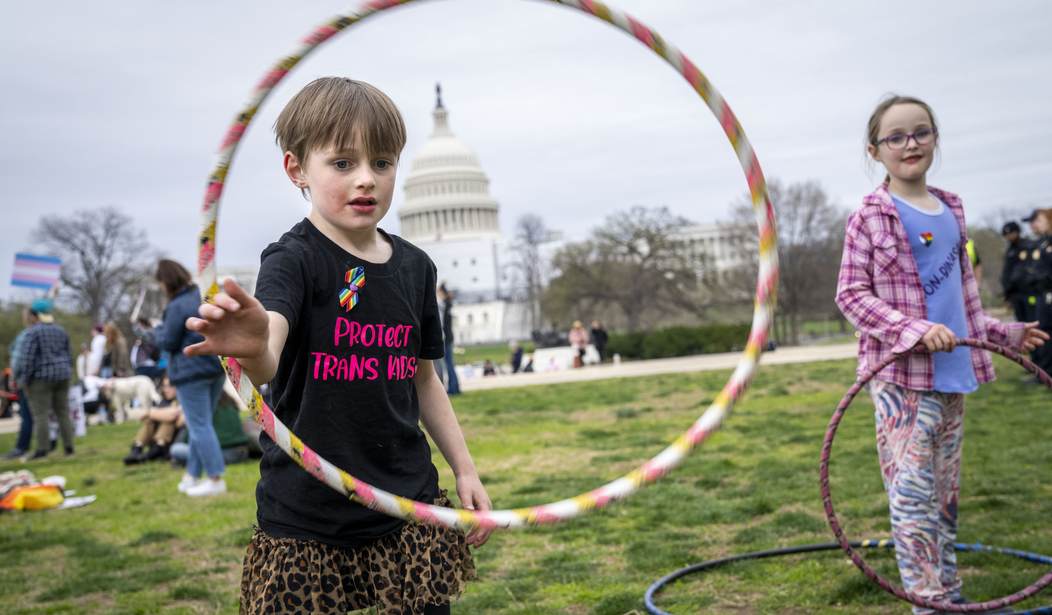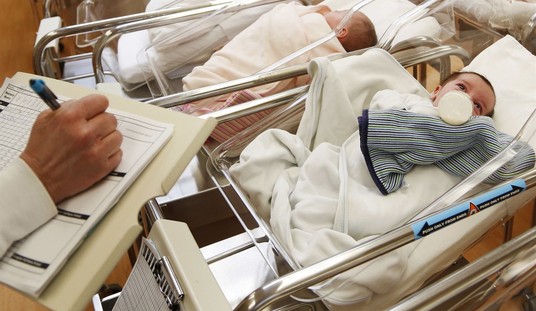You may not have heard of the Finnish Dr. Riittakerttu Kaltiala but you've seen her work. The myriad of young people who have decided they were gender fluid and began doing things to alter their bodies irreparably is something she helped to pioneer.
However, Kaltiala seems to regret her work now and is sounding the alarm over the damage it's doing to people, specifically the youth.
In an op-ed at The Free Press, Kalitala writes that the "gender-affirming care" she helped pioneer is harmful to those who engage in it, and that the methods by which it's pushed on the youth is predatory.
Kaltiala starts by saying she's always been fascinated with adolescent psychiatry and knew she wanted to be a psychiatrist to the young early in her studies. However, over the "past dozen years or so," her field shifted to a focus on medical gender transitions of children and teens who experience gender dysphoria. She describes the "breakout study" in 2011 by Dutch clinicians that spurred on the idea of helping children transition early to live more convincingly as the opposite sex. This method was later dubbed the "Dutch protocol."
When the activist movement made transgenderism a mainstream concept, the Ministry of Social Affairs and Health in Finland created a pediatric gender program and tasked Kaltiala's department at her hospital to head up the program.
As Kaltiala noted in her editorial, even from the beginning, she had questions about interfering in the development of healthy growing bodies. Still, the research was pushed by the government and the treatments proceeded. Kaltiala reported that she and her clinic have met over 500 young patients for psychiatric evaluation. In the early years, half of these youths were approved for transition procedures and that has now shrunk to 20 percent in recent years.
Moreover, Kaltiala says she was shocked by demographics that showed up in droves when the program was first opened up, and moreover, the vast majority of them presented with psychological issues that had nothing to do with gender dysphoria:
We expected a small number of boys who had persistently declared they were girls. Instead, 90 percent of our patients were girls, mainly 15 to 17 years old, and instead of being high-functioning, the vast majority presented with severe psychiatric conditions.
Some came from families with multiple psychosocial problems. Most of them had challenging early childhoods marked by developmental difficulties, such as extreme temper tantrums and social isolation. Many had academic troubles. It was common for them to have been bullied—but generally not regarding their gender presentation. In adolescence they were lonely and withdrawn. Some were no longer in school, instead spending all their time alone in their room. They had depression and anxiety, some had eating disorders, many engaged in self-harm, a few had experienced psychotic episodes. Many—many—were on the autism spectrum.
It wasn't long before Kaltiala began noticing stark differences between the outcomes her patients were exhibiting from the procedures vs. what was written in the Dutch Protocol study. Believing, at first, that there was perhaps an anomaly in her own patient population, she began reaching out to other professionals in Europe, only to find that the caseloads were very similar to hers.
It was mainly girls with psychiatric problems.
Then, things began to get dark. Instead of psychiatric relief promised by the Dutch Protocol, the lives of those who transitioned weren't thriving but regressing. Moreover, it was a common outcome the world over:
The young people we were treating were not thriving. Instead, their lives were deteriorating. We thought, what is this? Because there wasn’t a hint in studies that this could happen. Sometimes the young people insisted their lives had improved and they were happier. But as a medical doctor, I could see that they were doing worse. They were withdrawing from all social activities. They were not making friends. They were not going to school. We continued to network with colleagues in different countries who said they were seeing the same things.
Kaltiala's clinic published a study in 2015 revealing these results and bringing forward the issues this treatment was presenting, but instead of the global medical community taking a step back and reevaluating, it doubled down.
Moreover, a different phenomenon began to occur. Teenage girls would arrive in her clinic all sharing the same life stories and how their experiences led to them realizing they were "transgender" despite no history of dysphoria. The pattern made Kaltiala realize that this had become something more social than medical:
We began to see groups of teenage girls, also usually from 15 to 17 years of age from the same small towns, or even the same schools, telling the same life stories and the same anecdotes about their childhoods, including their sudden realization that they were transgender—despite no prior history of dysphoria. We realized they were networking and exchanging information about how to talk to us. And so, we got our first experience of social contagion–linked gender dysphoria. This, too, was happening in pediatric gender clinics around the world, and again health providers were failing to speak up.
It wasn't until years later that the medical community finally began speaking out against gender transition treatments for the youth. As "transgenderism" became more political, members of the medical community became afraid to speak out against it as they would likely be subjected to the wrath of the mob and the possibility of losing their careers. Kaltiala notes that medical organizations are supposed to "transcend politics" but even medical organizations have been hostile to pushback of these treatments, including the American Academy of Pediatrics here in the United States.
In fact, the AAP rejected two proposed panels raising the alarm at the annual conference of the American Academy of Child and Adolescent Psychiatry. Moreover, Kaltiala says she's "greatly disturbed" by the American medical community's predatory way of pushing parents into allowing their children to receive these treatments.
Kaltiala's story lines up with some of the reports we've seen about the youth being pushed to undergo treatments to "transition." In 2021, I reported about a Planned Parenthood whistleblower who would see groups of teenage girls come in to have their gender dysphoria treated with hormone therapy as if it were a fun group activity. They reported that the girls were "super cheerful, giggly."
Kaltiala's reports that those who engaged in the treatments were deteriorating also line up with reality. In 2018, the numbers show that those who do "transition" have more reports of depression and elevated suicide risk.
At this point, it's undeniable that the Dutch Protocol is a lie and Kaltiala's warnings should be headed. "Transgenderism," as it's known, is a political mind virus and social contagion that does not benefit anyone who submits to it.














